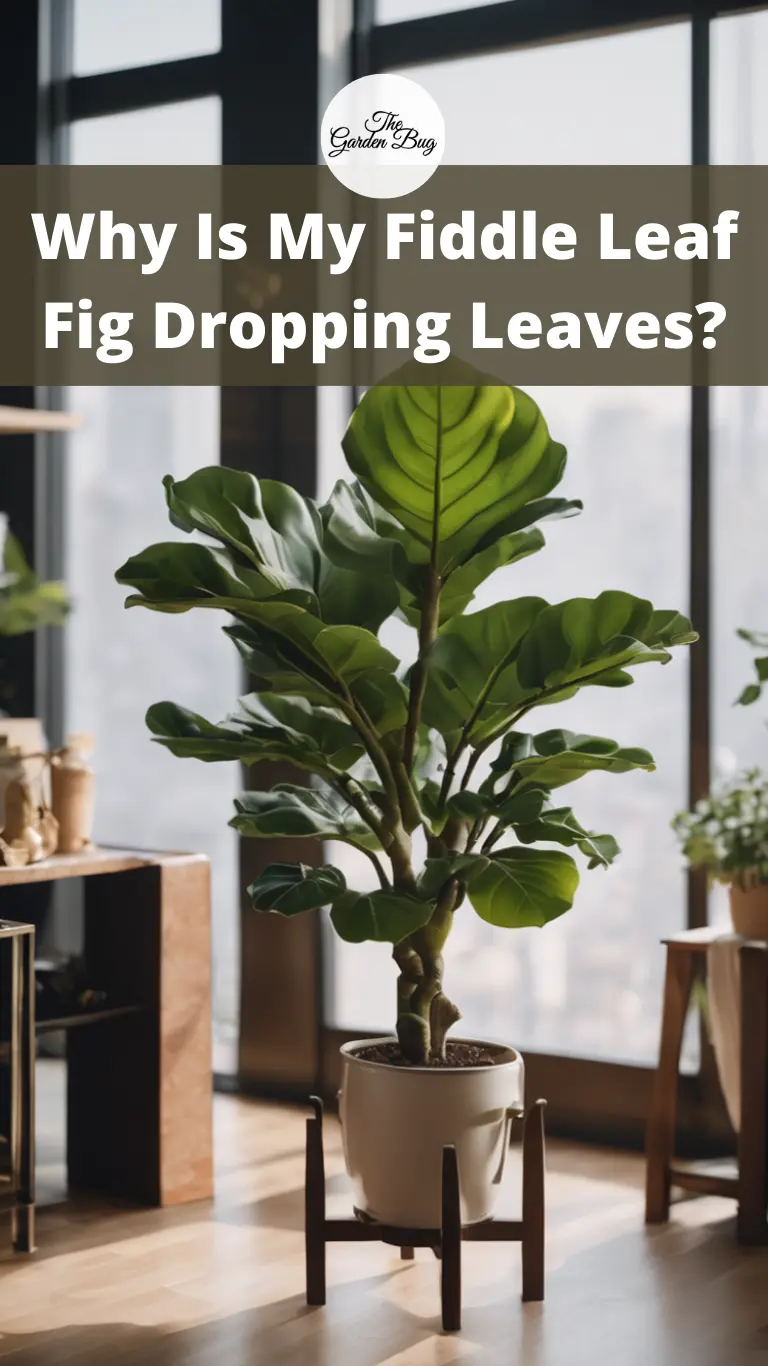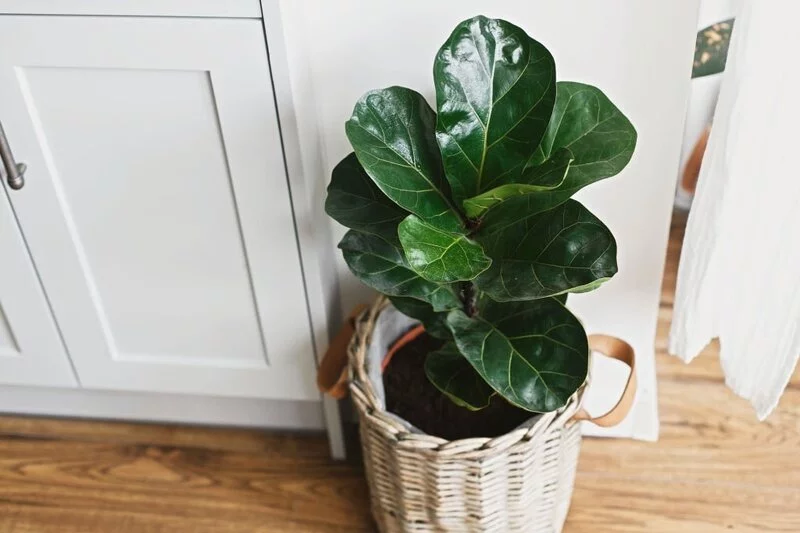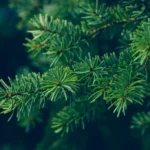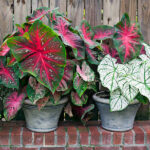Ah, the fiddle leaf fig! Known for its glossy, violin-shaped leaves and its star status in home decor magazines, it’s the diva of the houseplant world. However, it can be a bit of a drama queen at times. You may wake up one morning to find a leaf (or two, or three) has taken a tumble overnight. The panic sets in – why is my fiddle leaf fig dropping leaves? Well, don’t worry! It’s a common concern among plant parents, and we’re here to get to the bottom of it.
- STYLISH LIVE PLANT: Bring home a beautiful Fiddle Leaf Fig live plant for a tropical feel. Ficus lyrata houseplants are lush and green, dramatically improving indoor room decor aesthetic and bringing a focal point to any living room, office, and bedroom
- GORGEOUS HOME DECOR: Fiddle Leaf Fig is a decorative house plant that has the ability to improve the look and feel of your home decor with a touch of green. Carefully potted in a nursery pot and ready to be enjoyed instantly after unboxing
- UNIQUE GIFT: Surprise your loved ones with a live Fiddle Leaf Fig tree, ready to be gifted for any occasion, including birthday, anniversary, and housewarming. It’s a refreshing alternative to flowers or typical gifts, creating a lasting memory that shows you care
- PROMOTES WELLNESS: Plants make us happy. They give us life, fresh air and a sense of calm – all of which have the ability to lift your mood and improve your wellbeing. NASA studies show having plants improves mood, creativity and reduces stress
- AIR PURIFICATION: Fiddle Leaf Fig plants are known as natural air purifiers, helping to remove harmful toxins and pollutants from the air, creating a cleaner and healthier living environment
Understanding Fiddle Leaf Fig’s Natural Leaf Drop
First things first, it’s important to remember that losing a leaf isn’t always a bad sign. Just like trees in the park lose their leaves in the fall, it’s natural for houseplants to shed their older, lower leaves as they grow, especially if these leaves are shaded by the upper foliage.
In fiddle leaf figs, the leaves at the bottom of the plant are usually the first to go. They may turn yellow or brown before they fall off. This type of leaf drop is perfectly normal and not a cause for concern.
However, if your fiddle leaf fig is losing leaves rapidly, or if the dropped leaves are from the top or middle of the plant, it might be time to play plant detective and find out what’s going on. Let’s delve deeper into some of the common reasons for leaf drop in fiddle leaf figs.
Common Causes of Leaf Drop in Fiddle Leaf Figs
Fiddle leaf figs are famous for their drama, and they have a particular knack for expressing their dissatisfaction through leaf drop. Let’s take a look at some common causes:
- Overwatering and Underwatering: Too much water can cause root rot, which often leads to leaf drop. On the flip side, too little water can leave your fiddle leaf fig parched, and it might drop leaves as a stress response.
- Inappropriate Light Conditions: Fiddle leaf figs love a lot of indirect light. If they’re not getting enough, they might let you know by dropping leaves. Conversely, direct sunlight can scorch their leaves, which may also lead to leaf drop.
- Temperature and Humidity Fluctuations: Fiddle leaf figs prefer warm temperatures and high humidity. Sudden temperature changes or dry air can cause them to drop leaves.
- Inadequate Nutrition or Root Problems: Lack of essential nutrients or compacted, unhealthy roots may cause leaf drop.
- Pests or Diseases: Pests like mealybugs or diseases such as fungal infections can stress the plant and lead to leaf drop.
How to Address Leaf Drop in Fiddle Leaf Figs
Now that we know the possible culprits let’s talk about solutions.
- Adjust Watering Practices: Ensure your fiddle leaf fig’s soil is well-draining, and water only when the top inch of soil is dry.
- Light and Temperature Modifications: Place your plant near a north or east-facing window where it can get plenty of bright, indirect light. Try to keep the temperature around your plant steady, preferably between 60-75°F (15-24°C).
- Reviewing Feeding and Repotting: Feed your plant a balanced fertilizer during the growing season. If your plant has become root-bound, consider repotting it in a slightly larger pot.
- Pest and Disease Control: Regularly check your plant for pests and signs of disease. If you spot any, treat them promptly with an appropriate pesticide, fungicide, or home remedy.
Remember, the key to addressing leaf drop is understanding what your fiddle leaf fig is trying to tell you and then taking the necessary steps to restore its balance.
- All Purpose Mix; Nutrient Enrichment & Drainage Control for Fiddle Leaf Fig Trees & All Other Indoor Houseplants
- Mix Made With Coconut Coir — A Natural Soil Additive that Retains Water & Drains Excess Moisture Away from Roots
- Soil Comes Enhanced with Fiddle Leaf Fig Food to Increase Flushing, Green Foliage Every 6 Months
- Lightweight Formula Does Not Suffocate Roots; Allows them To Grow Freely
- Soil Comes in Heavy-Duty, Re-Sealable Bag Perfect for Storage or Later Use
Conclusion
Like a musician tuning their violin, caring for a fiddle leaf fig is all about hitting the right notes. It’s about finding the sweet spot between too much and too little water, providing just the right amount of light, and maintaining a healthy, happy environment for your plant. Yes, fiddle leaf figs can be a bit dramatic, dropping leaves at the first sign of trouble, but with patience and understanding, you can keep them looking beautiful and vibrant. Now, you’re armed with the knowledge to turn leaf drop from a cause for panic into an opportunity for plant parenthood growth.
FAQs
- Why are the leaves on my fiddle leaf fig turning brown? Brown spots on fiddle leaf fig leaves can be a sign of root rot, usually caused by overwatering. It could also be a response to low humidity or direct sunlight.
- Can a fiddle leaf fig recover from leaf drop? Absolutely! Once the underlying issue causing leaf drop is addressed, your fiddle leaf fig can bounce back with proper care and attention.
- How often should I water my fiddle leaf fig? There’s no one-size-fits-all answer to this question as it depends on your plant’s size, the pot size, the environment, and the season. However, a general rule is to water when the top inch of the soil feels dry to the touch.
- Where should I place my fiddle leaf fig? Fiddle leaf figs thrive in a location with bright, indirect light, such as near a north or east-facing window.






